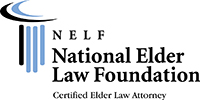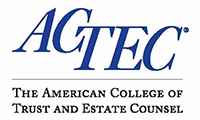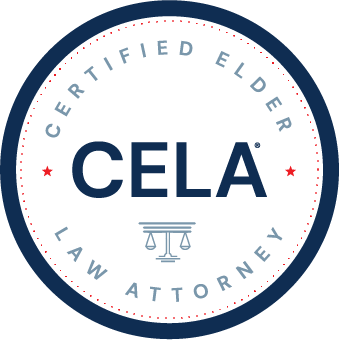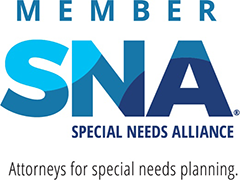By Bradley J. Frigon
What are the deductible contribution levels for my IRA?
For 2011, the deductible contribution limit is $5,000. The limit is $6,000 for individuals who are 50 or older in 2011.
Why is it important to have a designated beneficiary for my IRA?
You do not have to choose a beneficiary of your IRA, but if you don't, someone will choose it for you. This is similar to people who don't leave a will. Eventually someone will receive your money, but it may not be the person you want unless you take the time to check the beneficiary designation of your retirement account.
Your retirement account passes by a beneficiary designation, not by your will unless your IRA is made payable to your estate. Leaving your IRA to your estate or the wrong type of trust is not a good idea. Depending on when you die (before or after your required beginning date), the balance of your IRA may have to be paid out within five years.
The designated beneficiary of your IRA is the person whose life expectancy is used to determine the time period in which the IRA is paid out after you pass away. If you do not have a designated beneficiary, generally, the IRA must be paid out quickly after your death (within five years) eliminating any chance of further tax deferral.
Are there any charitable planning ideas for my IRA?
If you are leaving a portion of your estate to a charity and a portion to family members or friends, it may be a good idea to designate the charity as the beneficiary of your IRA account. The charity does not have to pay income tax on the IRA account balance at your death, while family and friends will pay income tax on the entire account balance when it is withdrawn. Significant income and estate taxes can be saved by leaving your retirement account to a charity.
Should I name my spouse as my primary beneficiary?
Most couples designate their spouse as the primary beneficiary of their IRA. You should understand that when you pass away, the spouse may "roll over" the IRA and make it their own IRA. This allows the spouse to designate new beneficiaries of the IRA. The new beneficiaries your spouse names may or may not be the individuals you want to receive your IRA after your spouse passes away.
You should also understand that your ex-spouse or ex-significant other may take your retirement account if you die and you did not change your beneficiary designation after your divorce or breakup. This can be a big surprise to your new spouse or significant other.
What happens if I name a trust as the beneficiary of my IRA?
Naming a trust as the beneficiary of your IRA can accomplish two primary goals. First, a trust can ensure that the money is paid out over a beneficiary's lifetime. Second, you can lock in the people you want to receive your IRA after you pass away. However, for your trust to be a "designated beneficiary" you must do two things correctly. Your beneficiary designation of your IRA must specifically name the trust, and your trust must be drafted correctly. If either one is wrong, the balance of your IRA generally must be paid out over a five-year period.
To distribute the IRA over the beneficiary's lifetime, the terms of the trust must identify the beneficiary and direct that all IRA distributions be passed through to the beneficiary.
Whom should I designate as my contingent beneficiary?
Most people name their children as the contingent beneficiaries of their IRA. Sometimes, it is a good idea to designate a trust created for the benefit of your child to receive the IRA. If a trust receives your IRA, you can make sure the IRA account balance is paid out over the lifetime of your child without the risk of the child spending the money all at once. This is known as a "Stretch IRA Trust."
You should consider giving your primary beneficiary the authority to disclaim their interest in the retirement account to multiple contingent beneficiaries. By incorporating disclaimer provisions into your beneficiary designations, you allow your primary beneficiary to take a "second look" at how to allocate your retirement account among various family members after you die.
Don't be dissuaded by the change of beneficiary form that is given to you by the plan administrator. You do not need to follow their form. The person who answers the 1-800 call is not going to understand whom you should name as your beneficiary. Consult with your lawyer on who should be your primary and contingent beneficiary.
Why is my required beginning date so important?
A participant must begin taking required minimum distributions (RMDs) from his or her retirement account by the required beginning date (RBD). The RMD does not apply to Roth IRAs. The RBD is April 1st of the calendar year AFTER the calendar year in which the beneficiary turns 70 ½. For qualified plans only, RBD rules do not apply to participants who are 5% or greater owners of the business and are not retired at age 70 ½..
Example 1: Bob is born on 6/30/1941; Bob turns 70 on 6/30/2011; Bob turns 70 ½ on 12/30/2011; Bob's RBD is 4/01/2012
Example 2: Jane is born 7/1/1941; Jane turns 70 on 7/1/2011; Jane turns age 70 ½ on 1/1/2012; Jane's RBD is 4/1/2013.
When can I begin taking money out of my IRA without a penalty?
Unless you made nondeductible contributions or have a Roth IRA, every dollar distributed from your IRA is fully taxable. A 10% penalty will also be imposed if you take money out of your IRA before age 59 ½. There are many exceptions to the 10% penalty rule including distributions to pay for educational expenses, expenses related to the account owner's disability, medical expenses, purchasing a home, and for military personnel called to active duty. The 10% penalty rule does not apply to IRA accounts that you inherit.
You should understand that the age 59 ½ rule does not apply to inherited IRAs. In other words, if you die and your 10-year-old child is listed as the primary beneficiary, your child must receive his or her first distribution by December 31st of the year following your date of death.
What are required minimum distributions?
Required Minimum Distributions (RMDs) must begin once a participant reaches his or her required beginning date (RBD). RMDs are calculated based upon the Uniform Table. A participant's RMD is calculated under the Uniform Table by dividing the factor into the balance of the participant's retirement account as of December 31st of the previous calendar year.
Example: In 2011, Bob will be 75 years old. The balance of his retirement account as of December 31, 2010 is $287,500.00. Bob's RMD is $12,555.00 ($287,500 divided by 22.9).
The only exception to the use of the Uniform Table occurs when the participant's spouse is more than ten years younger than the participant. When the spouse is more than ten years younger, the participant has the option to use the Joint Life Expectancy Table.
The value of my IRA tanked in 2009 from the stock market crash. Do I still need to take a required minimum distribution?
For 2009 only, congress suspended the requirement to take required minimum distributions.
Can I pass my IRA to a family member with a disability receiving means-tested government benefits?
If the family member is eligible for government benefits such as Supplemental Security Income (SSI) and Medicaid due to their disability, you do not want to designate them as the primary beneficiary of your IRA. Upon your death, the receipt of your IRA will disqualify them from SSI and Medicaid. To maintain eligibility for SSI and Medicaid, you must pass your property to a special needs trust created for the benefit of the family member with a disability. You can designate the special needs trust as the primary beneficiary of your IRA. However, this may cause higher required minimum distributions to be made from the IRA to the special needs trust, and create adverse income tax consequences. You should consult with an attorney that knows both tax and public benefit rules before proceeding in this area.
Learn more
Learn more by browsing our tax planning articles.
Call (720) 200-4025 now or email us to find out how our attorneys can help with your Tax Planning needs.












